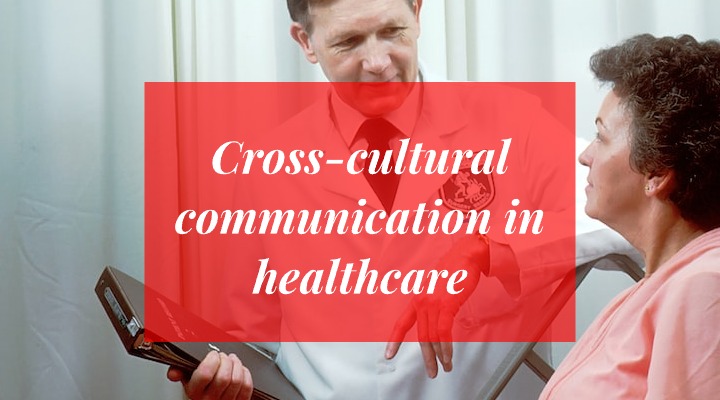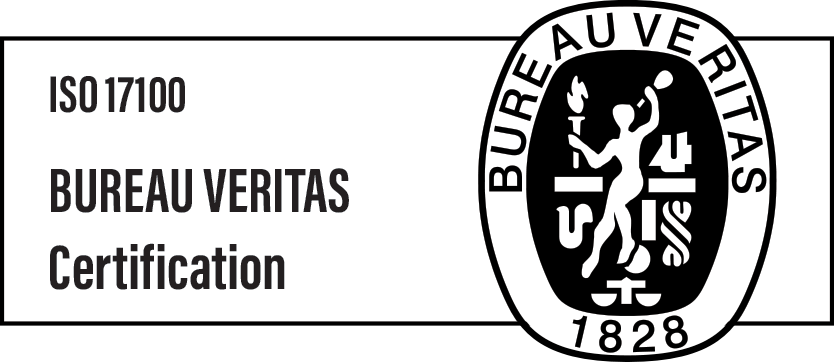Cross-cultural communication in healthcare

Cross-cultural communication in healthcare
When it comes to healthcare, there are so many vital aspects involved that sometimes we forget about the importance of proper cross-cultural communication. This is so to say, the intersection of culture, communication, and medicine plays a crucial role in ensuring that patients receive optimal and patient-centred care that takes their needs into account. This is especially important when dealing with patients from different cultures or speaking different languages. In this article, we want to bring you closer to all the nuances of cross-cultural communication in healthcare, with a focus on the role of accurate and natural translations, especially when it comes to patient-doctor communication.
Imagine a simple scenario – we are in the United States, in a hospital. A patient has just been admitted. His documents say he’s from China, but he barely speaks English. He can understand basic communication and respond to it, but he cannot conduct an informed conversation about his diagnosis and treatment.
Would such a situation be challenging for both the medical staff and the patient himself? Undoubtedly. In similar situations, cross-cultural communication can save the day and leave this patient with a positive experience. Of course, language plays a major role, but cultural sensitivity is also paramount.
Cultural competence in healthcare
Put shortly, cultural competence in healthcare providers refers to providing services and information in a way that’s respectful and sensitive to cultural differences. What does it mean in practice? Healthcare providers, especially those working in specific communities, should take the time to understand the cultural nuances regarding health within a given community. To show you a real-life example, some Hispanic cultures may attribute the development of diabetes to factors beyond genetics and lifestyle, such as susto (fright)[1]. The doctor should be aware of this fact. If they are not, his recommendations for treatment are likely to be discarded by such patients.
In a globalized world, where healthcare providers encounter individuals from various cultural backgrounds, developing cultural competence is very important. Doctors and other HCPs (healthcare professionals) must not only understand cultural beliefs, values and practices that may influence a patient’s health perceptions and behaviours but also respect them and show this respect in all interactions with such patients.
That’s why physicians should expand their cultural knowledge, as cultural competence is not just awareness. It’s all about using the right communication styles and even healthcare practices to align with the cultural context of a given patient. This is especially important in the patient-doctor communication.
Patient-doctor communication
Effective communication between patients and doctors is indispensable for successful healthcare delivery. However, this communication can become challenging when individuals from diverse cultural backgrounds interact. Language barriers, varying health literacy levels, and cultural differences in non-verbal communication can hinder the exchange of vital information.
To address these challenges, healthcare providers must adopt patient-centred communication strategies. This approach involves actively listening to patients, acknowledging their cultural perspectives, and adapting communication styles accordingly. Moreover, it requires a commitment to shared decision-making, where patients actively participate in their care plans.
There are already some apps and platforms that are designed for healthcare professionals to aid them in communicating with different cultures. Canopy Speak is one example. In essence, it’s an online medical Spanish course for US doctors that prepares them for patient interactions. It comprises 40 hours of training and comes with role-play communication exercises, a telenovela series (for contextual examples) and more features, making interacting with Hispanic patients more effective and natural.

Source: https://www.withcanopy.com/our-solutions/individuals
Training and education for medical translators
Cross-cultural communication is important not just for doctors and other HCPs but also for translators working with medical texts. The truth is that medical translators play a crucial role in facilitating understanding between healthcare providers and patients, especially when it comes to:
- Medical documentation
- Drug and treatment descriptions
- Medical advertisements and offers
- Other medical texts that patients can encounter during their treatment
Medical translators must possess not only linguistic expertise in both target and source languages but also a deep understanding of medical terminology and cultural nuances. In the healthcare world, translators act as intermediaries who help bridge potential language gaps, ensuring that accurate information is exchanged between patients and healthcare providers in a way that’s respectful and understandable to both sides of the communication.
To make all that possible, medical translators must have access to tailor-made training and education programs. The Canopy program that we mentioned earlier in this article is a perfect example. Because it’s in the form of a web app, doctors can learn at their own pace and train the newly-acquired skills and knowledge. Such training programs should emphasize the following aspects of medical translations:
- Ethical considerations (including doctor-patient confidentiality)
- Cultural differences with a focus on specific cultures and ethnicities that doctors can encounter in a given location (to give you an example, there’s no point in teaching doctors in Poland about cultural nuances of Intuits as it’s highly unlikely for a person of such background to become a patient in Poland)
Such a holistic but also tailor-made approach ensures that medical translators not only convey words and medical terms accurately but also interpret the cultural context, preserving the intent and meaning behind the communication.
Wrapping up
There is no doubt that cross-cultural communication in healthcare can be a huge challenge, especially when interacting with patients of unknown backgrounds. However, it’s still crucial to improve this aspect of global healthcare as this is the enabler for patients and HCPs from diverse backgrounds.
We believe that healthcare systems around the world should recognize the significance of cross-cultural communication and invest in the necessary aids – be it standard training or mobile/web apps. By fostering cultural competence among healthcare professionals, promoting patient-centred communication, and providing comprehensive training for medical translators, we can build a healthcare ecosystem that truly serves the needs of all individuals, regardless of their cultural or linguistic background.
In the meantime, we’re happy to assist you with your medical translation needs. Aploq translators are highly skilled individuals with medical backgrounds. We will be happy to help you translate all your medical texts, both for patients and doctors. If you want to know more, just contact our team, and we’ll handle the rest!
[1] https://www.ncbi.nlm.nih.gov/pmc/articles/PMC5847327/

